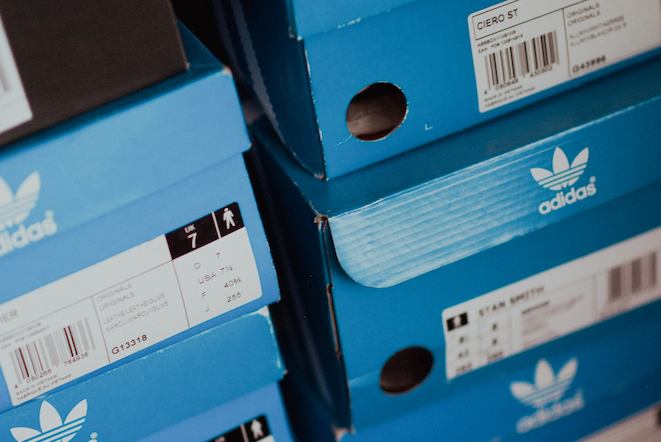Buying soccer cleats for your youth player can be confusing. Shoes that look the same can be priced very differently. We'll demystify the process for you and explain some of the terms you'll see like silos, and tiers, and how to decode the names of shoes.
Buying soccer cleats can be confusing. On the one hand, it seems like there are lots of options, but when you start looking, you may notice that manufacturers offer shoes that look essentially the same but with big price differences. The names of the shoes appear to hold a clue, but that means deciphering the seemingly random collection of numbers and letters at the end of the name. What’s the difference between Adidas’ Predator Precision.1 FG and the Predator Precision.3 FG other than the $100 price tag? To find out, keep reading.
The Savvy Soccer Cleat Shopper
An informed shopper is a savvy shopper, so we'll try to demystify the cleat-buying experience by providing a general overview of what the brands offer and explaining a few of the terms you'll run into. The good news is that it's not nearly as complicated as it first appears. To keep it simple, we'll focus on Nike, Adidas, and Puma since they pretty much dominate the market.
Different Styles of Cleats are Called Silos
Each of the major brands has developed different styles of soccer shoes which are referred to as silos. Most of the major brands offer three to four silos, with each of the silos designed to enhance a desirable skill. For instance, Nike's Mercurial silo is designed to promote speed, whereas Adidas Predator silo emphasizes ball control. Puma touts its King silo as a classic, timeless option.
Brands Offer 4 Tiers for Each Style
Within each silo, brands can offer up to four options that are differentiated by tiers. As the name implies, the tiers represent a kind of hierarchy of cleats. Generally, the cleats within a silo will look very similar, but depending on which tier they're in, they'll vary in terms of quality, performance, and price. Here's a brief overview.

Top Tier
A brand's top tier is made for highly competitive players and includes the absolute latest technology. In terms of construction and materials, cleats in this tier are the cream of the crop. These shoes aren't made, they're crafted. Not surprisingly, these are the most expensive shoes in the silo. They are the choice of professionals.
Second Tier
Cleats in the second tier have very similar technology and build as the top tier. They are constructed for the serious, competitive player who participates in organized competition. They are available at a lower price point than top tier cleats, and are an excellent choice for high schoolers, college, and adult league players.
Third Tier
The third tier is considered a more economical choice. The emphasis is more on durability than performance. These shoes still incorporate cleat technologies, just not at the same level as the higher tiers. Made with thicker materials, these cleats will be slightly heavier and less sleek than the first two tiers, but they are still very comfortable. This tier is a good choice for semi-competitive players who enjoy soccer but prefer to participate at a more affordable cost.
Fourth Tier
Some brands only make this tier available in youth sizes. While cleats in this tier lack the high-end technology of the other tiers, they will look and feel very similar. They are made of heavier material that comes at a much more affordable price. This is an ideal choice for young players, or players trying the sport for the first time.
Decoding Shoe Names
The name of the shoe provides a lot of information. The silo name comes first, followed by the tier designation, after which it may indicate what surface the cleat's designed for. Adidas and Puma use numbers to designate tiers, starting with the number one for the top tier and descending to number four for the last tier. One twist - Adidas uses decimal points so the top tier is 0.1 whereas Pumas opts for 1.0 - but it's the same idea. Nike avoids numbers altogether calling the top tier “Elite,” the second tier “Pro,” the third tier “Academy,” and the fourth tier “Club.” Following the tier, the shoe name may also indicate if it's been designed for a specific surface.
-
FG refers to “firm ground” which means cleats feature fixed studs that dig into natural and artificial grass surfaces for better traction.
-
AG cleats can be worn on artificial grass surfaces with a higher profile or with the appearance of a real grass. They are considered a hybrid that provide grip while ensuring there is no pressure underfoot.
-
MG cleats have multi-ground (MG) or hybrid firm ground/artificial grass (FG/AG) outsoles.
-
IC/IN refers to indoor or court cleats that are made without studs to be worn on courts and other hard surfaces.
-
TF refers to turf cleats that have several shorter studs that are made for artificial grass and turf.
To recap, the names include the brand, silo, tier (in that order) and may include the surface it's designed for as well. To see what that looks like, the following is an example of names for 2nd tier cleats designed for firm ground.
-
Adidas Predator 0.2 FG
-
Puma Ultra 2.0 FG
-
Nike Mercurial Pro FG
At European Sports, we strive to make soccer fun and affordable for your family. If you have questions about cleats or other soccer gear, stop by one of our soccer specialty stores located in Schaumburg, Glen Ellyn and Naperville. We're happy to answer your questions and we have everything you need to get your family ready for soccer.

